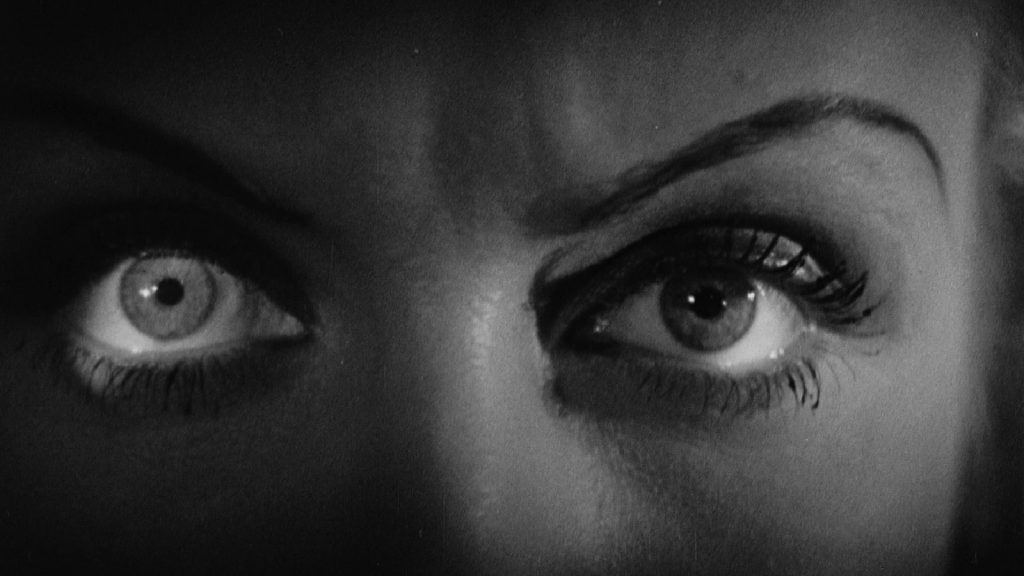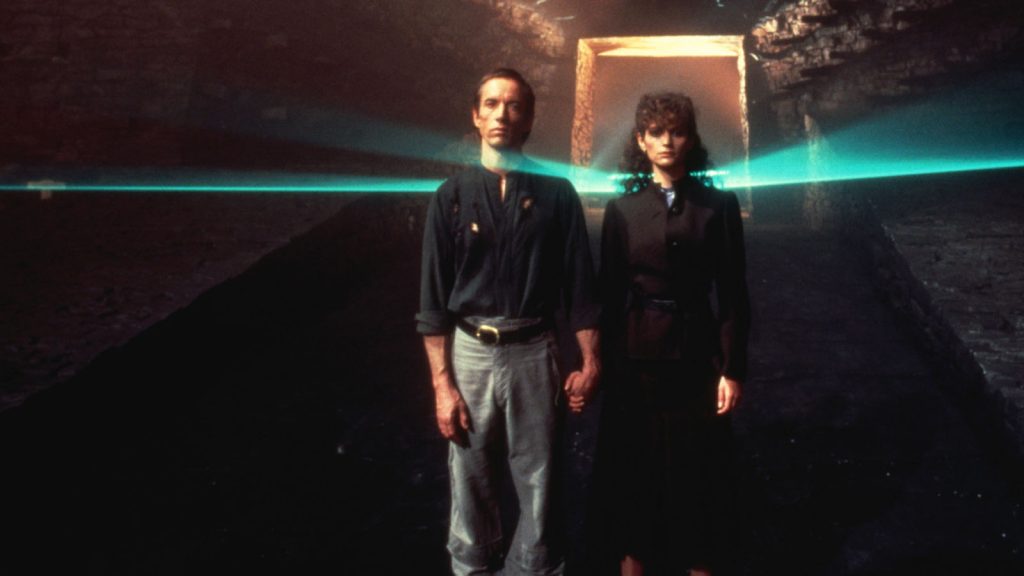
The opening images of Kaneto Shindo’s exquisite, dread-drenched, medieval Japan–set Onibaba (1964) are overlaid with telegraphic fragments of text: “THE HOLE. DEEP AND DARK…” That hole is the unmistakably vaginal void into which the bodies of samurai tumble after having been slain by an older woman (Nobuko Otowa) and her young daughter-in-law (Jitsuko Yoshimura). The two live in a hut surrounded by seemingly endless plains of susuki grass, waiting for their respective son and husband, Kishi, to return from conscription duty. There’s no reason to presume that these unnamed women are innately murderous; rather, they’re driven to homicide by hunger, stripping their victims of armor and weaponry and trading these items for sacks of millet. One day, a young man (Kei Sato) arrives begging for food and bringing reports of violence, chaos, and apocalyptic phenomena in Kyoto—and of the death of the pair’s beloved Kishi. His presence drives a wedge between the older woman and the younger one, who, newly liberated from her vigil, seeks to fulfill her pent-up desire. Meanwhile, along comes another stray samurai, this one bearing a demon mask, which the older woman will appropriate for her own purposes.
Onibaba was released the same year as Woman in the Dunes, a work with which it shares some remarkable thematic overlap. But where Hiroshi Teshigahara’s film depicted a gynophobic nightmare scenario that invited identification solely with its male protagonist, Shindo’s film, bleak as it is, observes each of its characters as sympathetic creatures motivated by basic instinct or extreme circumstance. Shindo was a veteran of both the Second World War and the Japanese film industry: he worked under Kenji Mizoguchi before launching an astonishingly prolific career, his directorial breakthrough coming with Children of Hiroshima (1952). Onibaba was inspired by a horrific cautionary Buddhist folktale Shindo’s mother told him as a child (just as Paul Bowles’s mother would read him stories by Edgar Allan Poe). Shindo set the film during the Sengoku, or Warring States, period because, as he believed, human nature could be depicted more easily in such a time of lawlessness and deprivation. The director was interested in the things war can make a person do.
I love how much of Onibaba’s story is delivered through the use of costumes: the young man’s anecdote about killing a priest just to pilfer his habit, or the way the women’s loose, threadbare garments often expose their breasts, not for erotic provocation, but rather out of simple neglect. Above all, there’s the ghastly mask that seems to adhere to its wearer, just as each of Onibaba’s stylistic choices adhere to its rich, implicit themes: the striking compositions combining horizon lines and faces; the strange luminous effects accompanying scenes of lovers running naked through the night, or of demon apparitions rising from the earth. And most memorably, there are the gorgeous images of wind causing the susuki grass to sway in serpentine patterns, as elegant a metaphor as I can think of for the fundamental malleability of human beings at the mercy of forces beyond their control. 🩸

is a freelance critic and playwright.
The tale of an amateur entomologist (Eiji Okada) lured by seemingly amiable rural folk into a sand pit from which he is unable to escape, Woman in the Dunes would seem to generate its particular...
BY JOSÉ TEODORO | October 31, 2022
Consider the Dies Irae. Eight dire notes to remind you that you are going to die.
BY TOM PHELAN | July 26, 2024
A swarm of samurai emerge from a bamboo grove in firefly patterns, arriving at the threshold of a humble hut. The scene is nearly silent, false tranquility preceding a torrent of savagery.
BY JOSÉ TEODORO | November 8, 2025

This pre-Code offering packs a lot of story into its typically brisk running time, with several plot threads weaving together a (not always successful) tapestry of spooky and criminal doings.
READ MORE >
BY ANN OLSSON | Month 00, 2021

In what could be the fastest-resulting rape revenge movie, a drunken lout brutally forces himself on Ida, the young woman who doesn't return his affections, during a party over Labor Day.
READ MORE >
BY LAURA KERN | Month 00, 2021

Beast is a lot of movies in one package - fractured fairy tale, belated-coming-of-age story, psychological drama, regional horror film - but above all it's a calling card for its leading lady, Jessie Buckley.
READ MORE >
BY LAURA KERN | Month 00, 2021